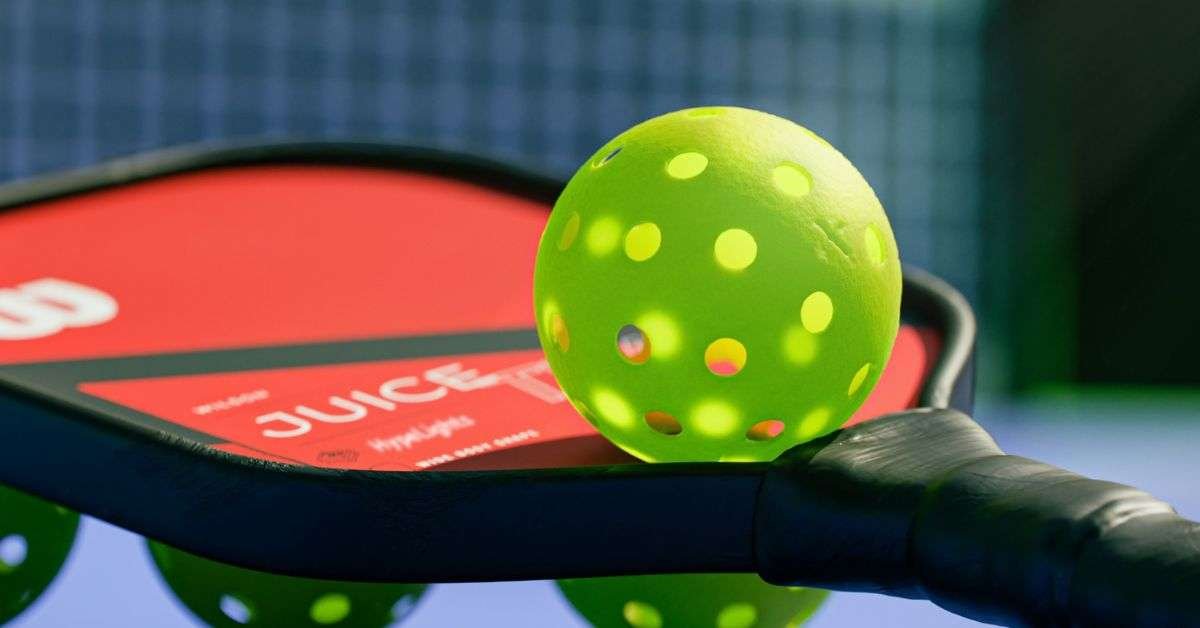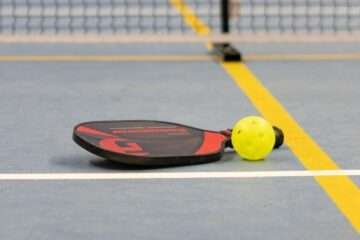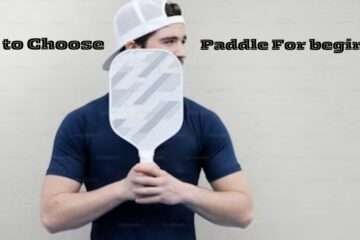The difference between indoor and outdoor pickleball balls seems more apparent when you have experience with both playing. Usually when a normal inexperienced individual listens to the term “ difference” they will reply to you with a very unchaotic and surely comeback, oh it’s the same, there is no difference as the sport is the same. While some individuals rationally and philosophically respond to you that the major difference lies in its appearance and surrounding pickleball balls, that’s it. More than this nobody can go for an extremist answer exceptional of experienced pickleball players who have been in the situation themselves.
Other than experiencing themselves, observation can also help a bit to judge the predicted difference between outdoor. Spectators with keen observation skis can also support the question with some relevant and wanted answers.
For you, whether you are an observer or new in pickleball I will mention some basic differences that are obvious and not only limited to physical differences but geographic conditions too.
Pickleball – Indoor vs Outdoor
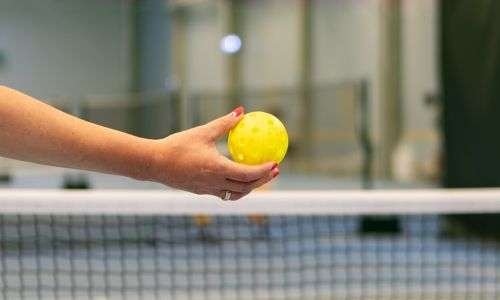
Many variations take place in pickleball balls in different settings. Some changes are predictable and some are unpredictable which can only be observed mentally and by keen observers. If you are not a keen observer, it’s ok.
This article will increase your information, providing valuable pickleball lessons that can foster your responses based on differences afterward. The reason why differences lie in both settings is outdoor ball has been designed to withstand elements such as unpredictable wind and a harder quartz surface as the indoor ball is slightly lighter and softer.
Physical Differences
The main physical differences in pickleball balls in their physical appearance lie and vary from place to place such as indoor and outdoor.
Holes Difference in Indoor vs Outdoor
1- No. of Holes
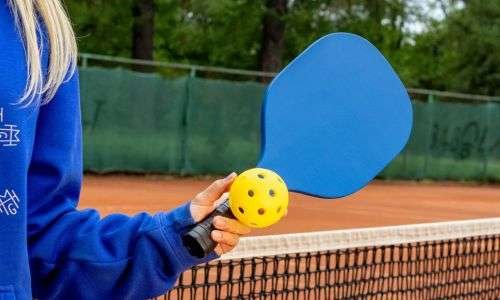
The holes difference in the balls lie when you choose an indoor setting or an outdoor setting. You have to consider the whole demands when choosing the setting.
Outdoor pickleball balls have 40 smaller holes and are closely packed into each other
Whereas,
Indoor pickleball balls have 26 larger holes.
Why there is a difference in holes?
Outdoor balls have smaller tightly packed holes to make them less affected by external factors such as wind or concrete hard surfaces whereas indoor balls don’t require any distracting factors that can affect the nature and throwing of the ball so they have larger holes without any hesitation.
2- Hole Diameter
The other difference between indoor and outdoor pickleball balls is their diameter difference which exists in both settings.
The diameter of holes varies by brand and model and differences exist between the indoor and outdoor settings of balls. As you know indoor pickleball balls have wider holes as compared to outdoor balls, but you want to know how much wider?
Outdoor pickleball balls diameter is around 2.897 inches( 7.36cm) – 2.972 inches(7.55cm).
Whereas,
The indoor pickleball ball diameter revolves around 2.874 inches(7.30cm) – 2.897 inches(7.36) cm.
3- Weight range
The other difference between indoor and outdoor pickleball balls is Their variation of weight.
Outdoor pickleball balls typically weigh more than 25.5g (0.9oz) – 26.51g(0.935oz)
Whereas,
Indoor pickleball balls weigh differently and are lighter than outdoor that is 22.11g(0.78oz)- 24g (0.855oz).
Why does it weigh differently?
The outdoor balls weigh heavier because of their construction in material. It is made of very hard plastic construction to show resistance to any external factor as discussed above. There may be any rain or wind interference so it’s easy to pick a hard surface ball for outdoor for its appropriate performance.
The indoor balls weigh lighter simply because they are inside and won’t confront any distasting factor.
The other contribution to its weight is that 26 holes in indoor balls cover more surface area than outdoor pickleball balls of 40 holes, this identifies there is more negative space indoors so it is lightweight and not heavy weight like outdoor pickleball balls.
4-Hardness
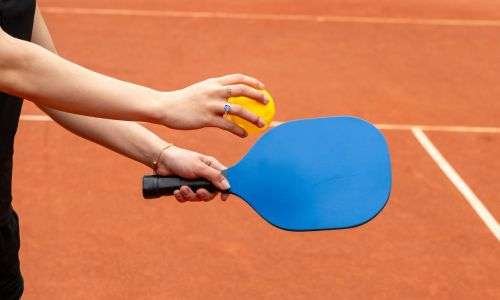
Everyone can easily target pickleball ball material by a tactual and viewing skill that pickleball ball material is created by plastic but every plastic is not the same. Some are harder and some are lighter. You can prove this talk by examining plastic crockeries.
Which one is harder – indoor or outdoor pickleball balls?
Typically the research exposes the difference between indoor and outdoor balls,
Outdoor pickleball balls are harder only reason is their construction material which is hard plastic and rubber used to design it for any hindrance created by your outside environment in which you are playing.
Whereas,
Indoor pickleball balls are not as hard as outdoor again the reason is the same that is their construction material as well as the number of holes that give large space in between 26 holes.
Here is a short measurement of every material and its hardness ranges from the specificity of either indoor or outdoor pickleball balls.
- Low-density polyethylene: 40-50
- High-density polyethylene: 60-70
- Polypropylene: 70-83
- Polyethylene Terephthalate: 85-95
This research data is only for your additional convenience and selection of balls to play.
5-Durability
The other very certain difference that lies between indoor and outdoor pickleball balls is their durability.
Durability is highly influenced by material.
Outdoor pickleball balls are less durable on concrete and rough surfaces. The harder plastic used outdoors makes them prone to cracking, splitting, and losing shape.
Whereas,
Indoor pickleball balls are instructed to be used inside within four walls as there is no hindrance that deteriorates your performance and so are more durable and long-lasting because of their lightweight.
The durability difference between outdoor and indoor settings is the material that affects the bounce as well as the durability of the ball.
Other Differences Between Indoor and Outdoor Pickleball Balls
There are many other side differences between both settings.
Drag and speed: The outdoor ball drags low and has high speed.
Whereas,
On the other hand, indoor ball drags high and has low speed.
Control and spin: The outdoor ball is harder to hit more precisely than the shots and adds more spin. It’s difficult to catch and identify the ball style and requires effective skills to play a desirable hit.
Whereas,
Indoor balls are easier to control and add spin to shots.
Rallies: The rally difference occurs between the two.
Outdoor tends to have rare long rallies whereas long rallies are frequent within indoor pickleball balls.
Noise: The hard material always expresses more noise when it comes in touch with any other object or hit.
So, the result is outdoor balls create more noise when hit and on the other hand indoor balls are quieter.
Geographic Differences that Affect the Ball Nature
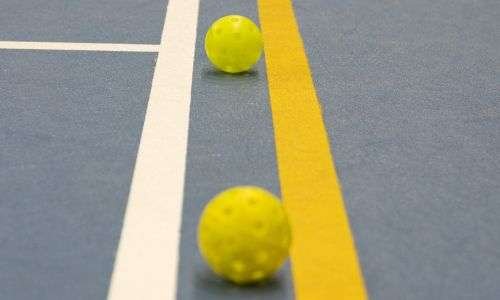
Till now we have discussed the physical characteristics that offer differences in both balls but now we will take into account geographical characteristics that may apprehend the differences in ball types.
Weather: Weather is the commonly considered factor when you play any sport outdoors. Outdoor pickleball balls are specially designed for outdoor conditions just because of weather conditions that are unpredictable and can cause changes hourly without proof.
The outdoor balls are heavier to resist gusts or any other unwanted weather condition that can be a cause of ceasing the game. In such weather conditions when your balm is heavy the wind can’t move it against your throw and you can easily play as well as mesmerize the weather with fun and joy.
Playing in pleasant weather helps you in generating positive memories with your friends and teammates to be loved later.
Friendly weather and a tough good play game are just so peaceful and a reason for catharsis for all your burnouts, oh god. It’s soothing to your soul and body, isn’t it?
It’s even so relaxing and peaceful in imagination.
Variation of Colors for Indoor and Outdoor
There are different colors available in pickleball balls. Now let’s see which ball color is suitable for which setting either indoor or outdoor.
For outdoors, darker color is used to easily detect the ball in different colors of the environment. It’s difficult to identify the color ball in daylight or at night because when you throw the ball, the color disappears and you only tend to focus on the speed to hit. Now if the color disappears with the speed, how will you recognize the ball? So that’s why use a darker theme ball for an outdoor setting to acknowledge your ball when coming towards you.
In contrast to indoor, the lighter color is used because you can easily detect it in your indoor lights and themes.
Which Ball to Use in Different Settings
As the difference between indoor and outdoor pickleball balls is frequently certain, people are also confused about which ball to use in which setting or court, here is the answer to your unclear thoughts.
However, the usage of the ball is based on what the court surface is. Your selection will depend on your playing surface to play, got it?
If you are playing indoors on a tennis court surface, you will use outdoor balls even if it’s indoor but the surface is hard, concrete and remember outdoor balls are basically designed for hard surfaces.
The indoor ball is used for gymnasium floors. If you play outdoor ball on a gymnasium floor, the ball would be skidding and it would be virtually impossible to play. So be careful with what ball should be chosen and played.
What Players Should Use Outdoor Balls and Indoor Balls
Outdoor balls are better played by professionals as they can cope with every hit with their expertise and advanced practiced skills.
Beginners should go for indoor balls as they are not so skilled while practicing indoor balls are suitable pick.
How to Choose the Right Pickleball Ball
Due to the differences between indoor and outdoor balls, one can get confused in picking the right ball for your match.
When buying the ball, first think of the surface. If it’s a hard surface and a large court then go for an outdoor ball by observing its physical appearance such as the high number of holes, color, weight, material, etc. If playing indoors but on a broad surface then still you have to choose outdoor ball.
But if you are playing indoors, on a light surface and with no specific court then go for the indoor ball by judging its properties such as light weight, few number of holes, etc.
Final Thoughts
Well, hope this wealth of information will help you a lot in playing and choosing pickleball balls and also easily notify you of the differences between indoor and outdoor. For more information, visit pickleball lessons.

